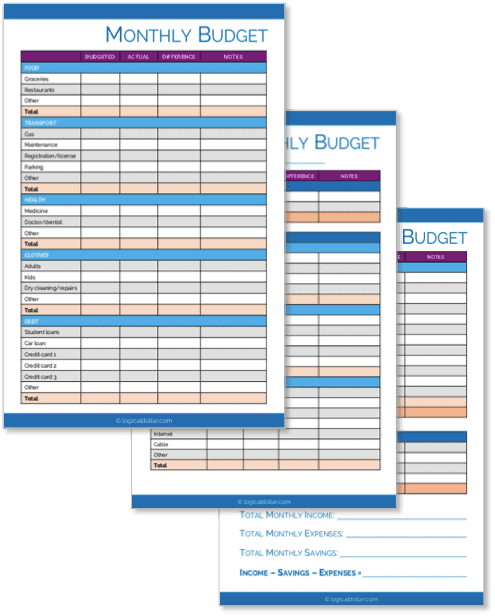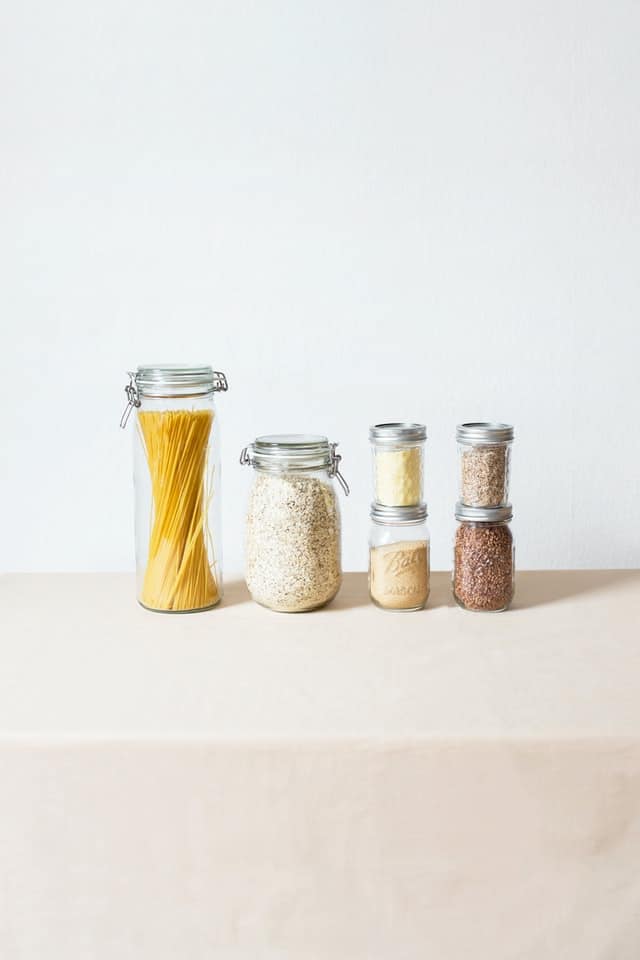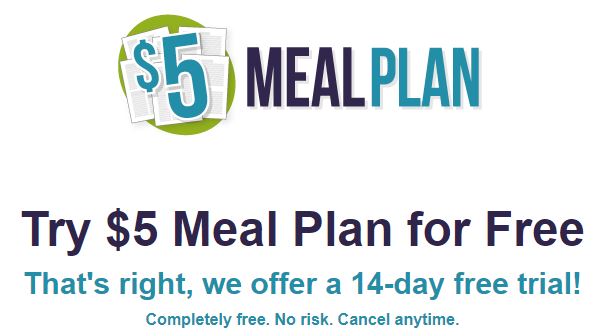Sure, you may think you have to stop spending money on food, but working out how much you should spend on food a month is harder than it first seems.
After all, eating is great! So you need to hit that sweet spot between sticking to a reasonable budget without completely depriving yourself.
But deciding that you need to put yourself on a cheap monthly food budget is a great step for anyone looking to reduce their expenses. This is because food costs are one of the top three expenses in most household budgets (alongside housing and transportation).

TAKE BACK CONTROL OF YOUR FINANCES
Our free budget planner will help you to quickly and easily take control of your money – instead of it controlling you.
Get it free for a limited time!
You’ll also join our mailing list to get updates on how to manage your money – unsubscribe at any time at the end of each email.
And this means that working out where cuts can be made to this is perfect for having a big impact on your budget with only a few adjustments.
So keep reading to see just how much you should spend on food a month – as well as exactly what you can do to budget for food and save a ton of money.
How much should I spend on food a month?
According to the USDA Food Plan, you should spend between $587.40 and $1,339.80 on food a month based on the varying costs of a family of four.
You can see more detailed information in the current USDA food budget, including individual costs for men, women and children at different ages as well as families of two. In the case of a family of four, their estimated monthly cost on food can be broken down as follows:
- Thrifty plan: This is based on the very cheapest food budget and would involve a family spending between $587.40 and $673.60, with the higher price applying when their kids are a bit older.
- Low-cost plan: The second cheapest plan would see a family of four having a monthly food budget of $750.30 to $886.
- Moderate-cost plan: This is the second most expensive plan and would involve the family spending between $926.30 and $1.106.40 on food a month.
- Liberal plan: This is for those families with more to spend on food a month, with their food budget being between $1,144.40 and $1,339.80.
It’s also worth noting that this assumes that all meals and snacks are prepared at home, so how much you spend on food a month may increase if you plan to eat out at all.
How do I stop spending money on food?
When trying to stop spending money on food (or at least spending as much as you do now), there are a few tips you can implement that will make a massive difference on how much you spend on food a month.
1. Meal plan
Meal planning is one of the best ways to stop spending money on food, as it helps you to:
- Base your meals around cheap ingredients – By planning meals that have cheap, healthy ingredients as the main part of the dish, you’ll be able to lower their overall cost
- Have meals based around similar ingredients, helping you to save money by buying in bulk – Buying individual ingredients for different meals adds up, so being able to use similar ingredients in different meals – without them being boring and repetitive – is a great money saving strategy
- Save money by not letting food go to waste – It means that you’ll only buy food that you know you’ll use, making sure money isn’t going in the bin when the food goes off
- Make sure you always have ingredients on hand to make a meal, so you won’t resort to getting take out – After a long day at work, thinking about what you want to cook for dinner is the last thing you want to do. The cost of getting take out really adds up though, so this is a great way to avoid that happening.
- Save time during the week, making it much less likely you’ll spend money on take out if you think you’re too busy to pick a meal – Meal planning saves a TON of time during the week as you’ll know exactly what you’re making already.
The one downside of meal planning is that it can take some time to do – not to mention that it’s not the most exciting way to spend your time.
This is why I’d really recommend you take a look at $5 Meal Plan. For just $5 per month, you’ll get:
- Five dinner recipes per week as well as lunch and breakfast
- A random goodie to make as well, such as dessert or a snack
- A grocery list to save you a ton of time in figuring out what to buy
- The assurance that every recipe costs less than $2 per person – and often much less
You can also sign up for a FREE 14-day trial here which you can cancel at any time.
2. Prepare your food ahead of time
Meal prepping involves making your food ahead of time, so all you have to do is simply grab the prepared meal, heat it up and it’s ready to eat.
This is a particularly good strategy for any household where most of you tend not to get home until quite late, whether it be due to work or extracurriculars. By the time you drag yourself through the door, the last thing you want to do is cook a full meal.
Unfortunately, this often means that you resort to getting take out as it’s much easier. It is, however, also much more expensive, especially when you’re trying to stop spending money on food. Instead, by having your cheaper, homemade meal ready to go, you’re far more likely to rely on that.
3. Freeze meals that you can quickly heat up
This ties into the previous option, but it’s a good idea to make meals ahead of time then store them in the freezer.
From there, you can simply pull them out of the freezer on the days you want to use them. This also works really well if you take your lunch to work (and you should!) as you can just grab it from the freezer in the morning. By the time you’re ready to eat in the middle of day, it should have defrosted.
The best way to do this properly is to focus on recipes that freeze well and meal prep in bulk. That way, with just a couple of hours in the kitchen (I do mine on Sunday afternoon), you can have up to two weeks of meals ready to go.

It can be a bit tricky at first to make sure you’re doing this as efficiently as possible, so you know you’re saving as much time and money as you can.
This is why I’d recommend this FREE freezer cooking workshop. Just by signing up for it, you’ll also get:
- A free freezer meal plan to test out
- A free list of which food freezes well – and which you should avoid
- A free printable shopping list for your meal plan to really make sure you’re saving as much money as possible at the supermarket.
Sign up here for your free workshop on how to save money with freezer cooking.
4. Stick to a shopping list at the supermarket
Making sure you stick to a shopping list to the supermarket is key for anyone looking to reduce how much they spend on food a month.
After all, supermarkets rely on the fact that you’ll buy that “one thing you might need” or that you’ll “grab a treat” when you see it at the check out.
Instead, by following a shopping list, you’ll only buy exactly what you need, avoiding food wastage when unused items go off as well as plain old money wastage when you buy things you don’t need.
It also makes sure you buy all the ingredients for your weekly meals in one hit, avoiding a second stop at the supermarket. If you have to go for a follow up visit, you’re greatly increasing the chances of you spending more money.
5. Take advantage of coupon apps
Gone are the days of having to spend hours cutting coupons. Instead, there are now some great apps for that.
And my top pick for this is definitely Ibotta.
How it works is that you receive cash back on almost anything you buy at thousands of retailers, including groceries but also medicine, clothes and even alcohol.
Plus, you’ll get a FREE $20 welcome bonus just for signing up and redeeming your first officer.
Sign up here to lock in your first $20 of cash back.
Ibotta
Free sign-up bonus: $20
Ibotta is a completely free app that gives you cash back on what you’re buying already – groceries, medicine, clothes and more.
In fact, users make $150 per year on average – not including your free $20 welcome bonus – with over $682 million having been paid out, so you know Ibotta is definitely legit.
6. Bring your lunch to work
Bringing your lunch to work is one of those money saving strategies that are always talked about – but that’s because it works.
In fact, it’s a bit scary if you add up how much you spend on food at work over the course of a year. That $8 sandwich at the cafe downstairs suddenly becomes $160 a month or over $2,000 a year.
This is why you should definitely factor in making lunches to your meal planning or freezer cooking. The fact you’ll be able to simply grab it as you walk out the door in the morning will literally save you thousands of dollars over the course of a year.
7. Avoid take out or restaurant meals as much as possible
While there’s no question that getting take out can be more convenient, there’s also no doubt that the cost of it can really add up, especially when you’re feeding an entire family.
This means that if you’re trying to reduce how much you spend on food a month, it’s time to cut back on the take out.

Meal planning and meal prepping can really help with this, as it ensures that you always have food on hand that you can quickly turn into a meal, even if you’re tired after a long day.
Of course, your budget shouldn’t deprive you of all fun – it’s simply a matter of spending your fun money strategically. This means that you could consider budgeting for one dinner out every month or so as a treat.
If you choose to do this, you should check out the discounts you can get through apps like Swagbucks. It offers money back at all sorts of restaurants around the US – and is completely free to use.
(And you’ll get a free $10 welcome bonus just for signing up here!)
8. Keep some convenience food on hand
For those days when you just didn’t have time to meal prep and you’re so exhausted that the thought of coming home to make a full meal sounds like the worst thing in the world, it’s a good idea to have some convenience food on hand.
The goal here is to do everything possible to deter you from getting take out, which is always going to be the more expensive option. So whether you choose to keep some microwave pizzas in the freezer or some other ready-made meal, keeping a few of these on standby can be a good strategy when you’re trying to limit how much you spend on food a month.
9. Don’t shop hungry
It’s been shown that going to the shops hungry can result in you spending up to 70% more than you would have if you’d eaten before going. And funnily enough, this even includes spending on non-food items!
The moral of the story is: have a snack before going to the shops, whether you’re planning to visit the supermarket or Target.
10. Buy in bulk if you can
This won’t be an option for everyone, especially if you don’t have much storage space. But if it’s a possibility, buying in bulk can really help to stop spending money on food.

The goal here is to buy things in bulk that last for a long time, meaning things like rice, beans, legumes and flour are all perfect for this.
From there, you can then structure your meals around these ingredients. By making cheap items the main item of any meal, you’ll be able to cut your costs far more effectively.
11. Shop seasonally
Buying fruit and vegetables that are in season will save you a ton of money over the course of a year. Not only will they be cheaper to buy given that they won’t be brought from the other side of the world, they also tend to last longer. This means that you won’t be wasting money when your food goes off in only a few days.
The USDA has a great Seasonal Produce Guide to help you see what’s on offer for you now.
What can you cook for $5?
While you could go looking for your own dishes to put into a meal plan that each cost $5, a far better strategy to save you both time and money is to consider signing up for $5 Meal Plan.
You’ll get a FREE 14-day trial that you can cancel at any time, with different recipes for breakfast, lunch and dinner sent to you every single week. And the best part is, they all cost less than $2 per person to make.
Some examples of what you can cook under the $5 Meal Plan just from one week of their plans include:
- Balsamic chicken wraps
- Homemade grilled pizza pockets
- Chili pasta bake
- Grilled chicken with mango-BBQ dressing
- Avocado egg breakfast sandwich
- Berry granola
How much do you spend on food a week in this plan?
Erin, the founder of $5 Meal Plan, has four sons and she says that she uses the meal plans to feed her family of six for less than $5 for the entire meal.
You can do the math, but you’ll quickly see that strictly following this meal plan brings you well below the amounts suggested in the USDA food budget.
How do you budget for food?
The best way to budget for food is to follow a few simple steps:
- Track how much you currently spend. You can’t figure out where you need to make changes until you know where you currently stand. This is why tracking exactly how much you spend on food a month (possibly in one of these free budget printables) should be your first step when looking to cut this spending. It’s also a good idea to keep track of your spending on other “needs” too, as they’re going to fit together in your food budget.
- Work out how you wish to set up your budget. There are many different budgeting methods you can use, but one of the easiest ones is the 50/20/30 method. This involves using only three budget categories to divide up your spending, including allocating 50% of your budget to your needs.
- Calculate how much you have to spend in total on needs. This is explained more in this article on the 50/20/30 budgeting method but, essentially, you need to figure out what is 50% of your income and include all your needs in this, including food. Based on these household budget percentages, you should aim for your food budget to be no more than 10% to 15% of your overall budget.
- Continue to track your spending to make sure you’re sticking to your spending limit. Making a budget is only the first step, with the next step being to actually stick to this. The best way to help you do this is to continue to track your spending to keep an eye on how well you’re doing – or, alternatively, to see where further tweaks may be needed. Using a budget planner for this can really help.

MANAGE YOUR MONEY LIKE A BOSS
Managing your money effectively can literally change your life. And starting a budget using our budget planner is the first step towards you doing just that.
Get it free for a limited time!
You’ll also join our mailing list to get updates on how to manage your money – unsubscribe at any time at the end of each email.
Another great way to make sure you’re doing everything you can to stick to your budget, including your food budget, is to automate how you track your spending with an app.
For this, I always recommend Personal Capital. It lets you see your entire financial situation in one, FREE app, including giving you personalized tips on how to improve your money management.
Personal Capital
Our pick: Best money management app
Easily our choice for the best app to help you manage your money better.
Create a budget, track your spending automatically, receive personalized advice, get alerts about hidden fees and a ton more – and it’s all free.
How much should I budget for food a month?
You should aim to budget between 10% and 15% of your total income on food a month. This means that if your take home income is $4,000 a month, you should budget up to $600 for food a month.
This aligns with data released by the US Department of Agriculture, which says that Americans spend around 10% of their disposable income on food, with roughly an even split between food eaten at home and food bought outside of the home.
Using these percentages should help you work out how much you should budget for food a month based on your earnings.
What’s a cheap monthly food budget?
A cheap monthly food budget according to the USDA Food Plan is $381.90 for a family of two and $587.40 for a family of four.
However, depending on what your take home income is, this may actually be more than the 10% mentioned in the previous section. This means that the answer to the question of how much you should spend on food a month is going to very much depend on your household size, their ages and your disposable income.
How much money should you spend on food each day?
The USDA Food Plan says that a thrifty plan for a family of four costs $587.40 per month. This equates to $19.58 per day for the family or just under $5 per person.
This may not always be possible for every family, including if you want to go out from time to time. It does, however, at least give a goal to strive for in your food budget.

Is there a food budget calculator?
Given that the general recommendation is to spend between 10% and 15% of your income on food, you don’t strictly need a food budget calculator to work this out.
That said, if you are looking for some more in depth results, this food budget calculator is great for showing you if you align with the USDA’s recommendations.
How do you budget for groceries for 2 people?
When budgeting for groceries for two people, you can refer to the USDA Food Plans which include recommended monthly spending amounts for families of two, ranging from $381.90 to $798.70.
The range depends not only on how cheap their food budget is, but also their ages. The data assumes that the budget for groceries is for two people either aged between 19 and 50 years old or 51 and 70 years old and can be further broken down as follows:
- Thrifty plan: This is the cheapest food budget offered by the USDA and would involve two people spending between $381.90 and $402.20, with the higher price applying when the couple is 50 years old or younger.
- Low-cost plan: The second cheapest plan would see the couple having a monthly food budget of $494.10 and $515.30.
- Moderate-cost plan: This is the second most expensive plan and would involve the budget for groceries for two people being between $616.70 and $639.50 a month.
- Liberal plan: This is for those couples with more to spend on food a month, with their food budget being between $743.80 and $798.70.

What’s the average cost of groceries per month for 2?
Based on the USDA Food Plans, the average cost of groceries per month for two people aged 50 years old or younger is $588.93. The average cost of groceries per month for two people aged 51 years and up is $564.13.
What’s a realistic food budget for 1?
According to the USDA, the average amount spent on groceries per month for one adult is between $166.50 and $384.90.
What’s a realistic food budget for one specific person is, however, going to depend on a few variables, including their gender, age and how thrifty they want their food budget to be.
This aligns with the fact that working out how much you should spend on food a month doesn’t always have a simple answer and will involve taking into consideration a few different factors.
How much should I spend a week on food?
Based on the USDA’s Food Plans, the amount you should spend on food a week as a family of four varies between $135.60 and $309.20.
When working out how much you should spend a week on food, you’ll have to consider the ages of all family members as well as whether you want to be on a thrifty food plan or one that’s more moderate. Depending on what you choose, the USDA food budget can provide more specific guidance.

How much does the average person spend on food per week?
The USDA’s Food Plans indicate that the average person spends between $38.40 and $88.80 on food per week depending on their age, gender and how thrifty they wish to be.
This also applies only to adults, within different weekly rates applying to children of various ages.
What’s the average cost of eating out per month?
The average cost of eating out per month for a household is $294.
This is based on data from the US Department of Labor, which shows that, last year, households spent $3,526 eating away from the home. We can then divide this by 12 to find the average cost of eating out per month for households.
What is the cheapest food to live off?
When looking for the cheapest food to live off, you should aim to buy items that aren’t expensive but are also nutritious, so that they fill you up for less money.
Examples of what you should buy at the grocery store when you’re broke include:
- Brown rice
- Beans
- Oats
- Flour
- Pasta
- Potatoes
- Eggs
- Frozen vegetables
- Canned tuna
- Tomatoes
- Bananas
- Noodles
- Peanut butter
When looking to reduce how much you should spend on food a month, loading up your cart with things like these is a great strategy.

Why are healthier foods more expensive?
Food such as fresh fruit and vegetables are more expensive due to the higher cost of farming them. They often need to be picked using human labor rather than machines and can cost more to produce overall even before the point of being harvested.
That said, this doesn’t mean that all cheap food is necessarily unhealthy. Looking at the list above of the cheapest food to live off, a lot of those items are extremely rich in protein, iron and other good things your body needs to thrive.
They’re also much more filling than other cheap food options, like junk food. While it may seem quick and easy to grab a cheeseburger at McDonald’s, you’re not going to stay full for as long as you would if you had a meal that was heavy on beans or rice.
And by getting hungry quicker, you’re going to need to eat earlier. This means that this could, in the end, very easily cost you more in the long run.
Final thoughts on how much you should spend on food a month
As you can see, the question “how much should I spend on food a month” doesn’t have a straightforward answer. It’s going to depend on a bunch of things like your age, gender and just how strictly you’re willing to limit yourself.
But this also shows that it’s not actually that difficult to make some very effective cuts to your grocery expenses. Even simply following the trifecta of meal planning, using your plan to create a shopping list and then doing meal prep based on this plan is going to save you a ton of money with just those steps.
And with food being one of the biggest expenses in any household budget, making some positive changes here is going to have a significant impact on your overall budget too.
It may take some adjustments to your habits, such as if you’re used to picking up pizzas on the way home from sports practice each Thursday night or going out for lunch every day with your colleagues.
However, you can easily replace this with homemade pizzas (that you made and froze over the weekend) or bringing lunch to work and finding somewhere you can eat this together. While it may take slightly more preparation to do things like this, you’ll soon see that these small changes will have a huge effect on your overall food bill.

READY FOR MORE?
Join thousands of subscribers in getting regular tips in your inbox on how to take control of your finances and save more money – and, for a limited time, get our free budget planner as a gift!
You’ll also join our mailing list to get updates on how to manage your money – unsubscribe at any time at the end of each email.









